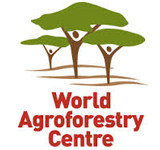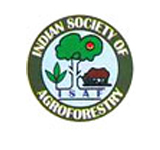
Vigyan Bhavan & Kempinski Ambience
10 - 14 February 2014
Delhi, India
blog

Don’t we all like the brownish pieces of bitter-sweet goods that melt on our tongues like a state of the art bowl of ice cream? Utterly demanding for producers, a logistical masterpiece for traders, unimaginably technical yet highly creative for chocolatiers; chocolate has the seducing power to blow the mind of the masses.
Problems with sustainability
However amazing our fantasies around chocolate may be, the world of chocolate is facing a big threat related to sustainability; In other words: the sustainable supply of the raw material, the cocoa beans needed to produce chocolate goods, is at stake. The fragile tree Theobroma cacao L., taken from its natural environment, the dense humid Amazon rainforest, and placed into full sunlight on extensive monocultures in West Africa and beyond, is exhausted. The sudden exposure of the trees to a rate of photosynthesis they had never known before overstrained them. Just like a mouse you put into an exercise wheel, they went full speed to produce unsustainably high yields for a rather short period of time compared to their natural life span. But there are two sides to every coin: While the sustainability of cocoa production is at stake worldwide, population rich countries like India and China are driving up the demand as they become prosperous.
Meanwhile, the industry has become aware of the threat to their business and producing cocoa in a sustainable manner is high on the agenda of big players such as Mars. Yet there are still many important questions left unanswered: What is the best form of producing cocoa sustainably? How much shade do the novel varieties (some of which might have been bred for tolerance of high light intensities) still need or tolerate? What are suitable shade trees? What other problems might arise in shaded agroforestry systems with higher relative humidity (e.g. pests and diseases) and are there practicable solutions to them? And perhaps most importantly: how long does it take until an agroforestry system catches up with a monoculture (and what is the contribution of cocoa by-products to compensate for the lower cocoa yields in the first decade or so)? These question need to be resolved for policy makers to know what incentive it takes to make farmers produce cocoa in sustainable agroforestry systems. As nice side effects they would help in the conservation of biodiversity, sequester substantial amounts of carbon and thus help in climate change mitigation, etc.
After all, novel technologies that don’t get adopted by farmers do not change anything, even if excited researchers developed them with the best of intentions in order to contribute to the resolution of the problem.
Research addressing the problem
Science has to provide information on advantages and limitations of different cocoa production systems. However, data on the long-term performance of cocoa monocultures as well as agroforestry systems under conventional and organic management are inexistent. The Research Institute of Organic Agriculture (FiBL) is pioneering to fill this knowledge gap with a unique long-term field trial in tropical Bolivia established in 2008. Collaborating institution include Ecotop Consult, the Institute of Ecology UMSA La Paz and the PIAF-El Ceibo Foundation. The trial is expected to run for a minimum period of 20 years and will provide indications on the long-term sustainability of the different systems.
First results are matching the expectations; significantly slower tree development and lower yields, but also less disease incidences in agroforestry systems compared to monocultures. How much the additional products harvested in agroforestry systems (e.g. plantain, cassava, pineapple) can compensate for the lower yields remains to be seen.
Photo: Producers, extension officers, scientists and students participating in a training course on sustainable cocoa production in agroforestry systems at the research and training centre Sara Ana, Alto Beni, Bolivia.
Blogpost and photo by Christian Andres/FiBL (Frick, Switzerland) – christian.andres(at)fibl.org
This post is entry nr #4 in our #WCA2014 blog competition. The five blogposts with the most and highest votes will receive a signed copy of the book “Trees for Life”. The most popular blogpost will get an iPad. This blogpost received 178 votes, with an average score of 5 (out of a max of 5). If you have questions or remarks on the project described in this post, please leave a comment below. Please also rate the other blogcompetition entries! Follow our #WCA2014 social reporting teamfollow our social reporting team via the #WCA2014 tag on Twitter, our blog and our Facebook page. |






11 People have left comments on this post
It is essential that we support efforts to save all endangered trees, plants , species and ourselves as well. I Believe that we forget that not taking seriously efforts to save whatever is endangered means that we are increasing the dangers of our own existence and to spread this awareness is of capitol importance for all of us in every corner of the world. Spreading the word is a way of bringing disparate ways of living and thinking to forge new goals which will ultimately contribute to the chances of not only saving the universe but making a fruitful and bountiful place for all inhabitants.
Top!
*****
Prä!
sehr guet!! aber ich gse net wo ich mini stärndli cha geh
***** Yeah Man!
Find au kei sterne..! :/
Thanks guys for your comments and votes. Keep it up. All the best
I’m impressed!!! Go on!!!
2 Trackback(s)